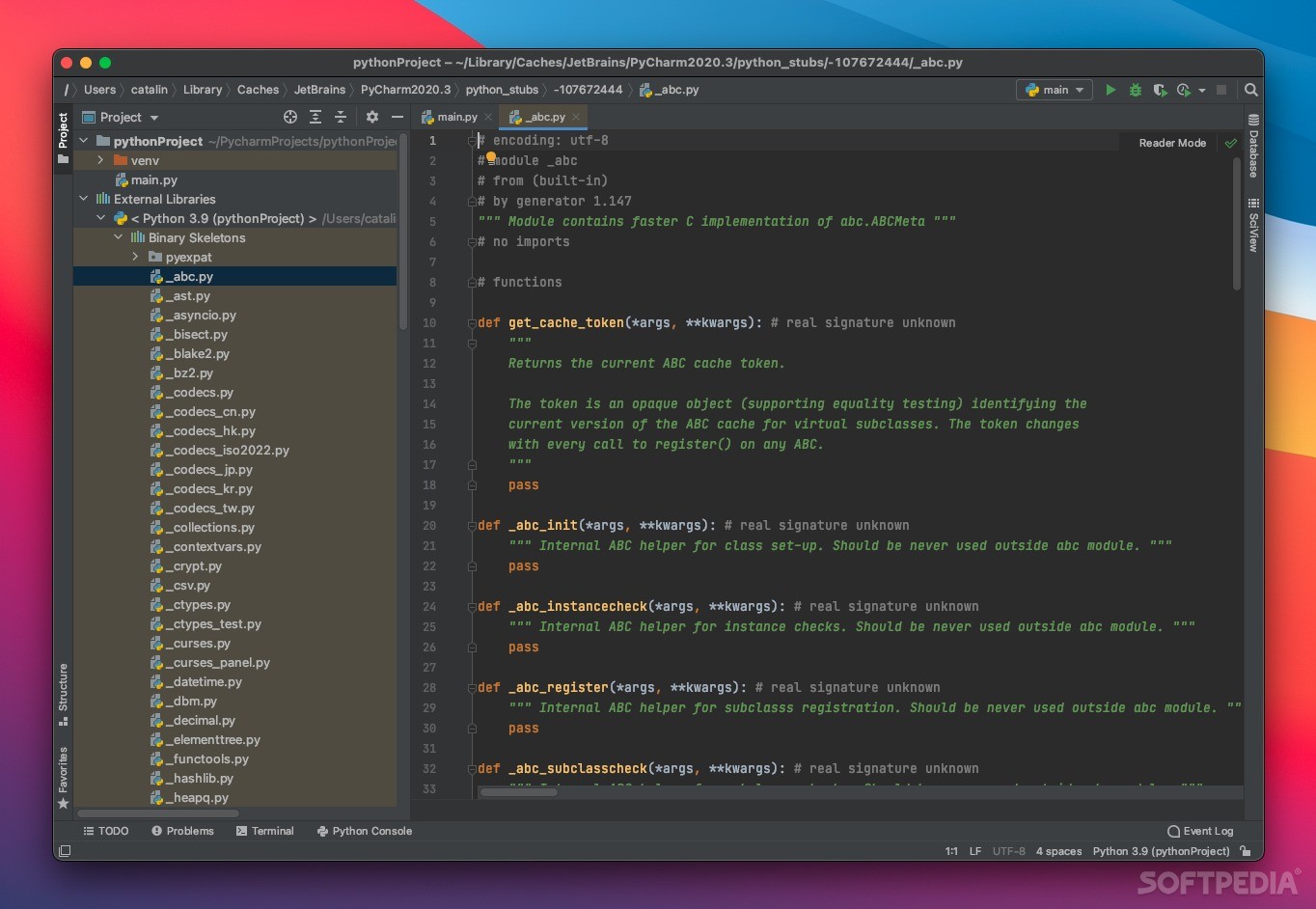

P圜harm takes care of uploading any changes to the remote machine and keeps the VM up and running. I open the browser to check that the application is really working:įrom this point on, we can work with this project like with a normal local project. P圜harm shows that the application is up and running on port 5000 on the VM. P圜harm sets the project interpreter (remote in this case) by default for this new run configuration, and finally I need to specify path mappings for this particular run configuration: In the Run/Debug configuration dialog, I specify the name for my new configuration and the script to be executed on the remote host. Let’s go to Run | Edit Configurations and add a new Python run/debug configuration: Now everything is ok, so we can finally specify Run/Debug configuration and launch our application. I can fix this easily with Alt + Enter on the unresolved reference error highlighted with red:Īlright. Here I’ll do it manually:Īfter I specify the new remote python interpreter, P圜harm starts indexing and finds that the flask package is not installed on the project interpreter: By default, P圜harm sets the local Python interpreter as a project interpreter, so I’ll change it to the remote one:Īs I’ve already created a deployment configuration, P圜harm offers to export Python interpreter settings from the existing deployment configuration:īut I can also specify the remote interpreter manually, using SSH credentials or a Vagrant configuration.
#Pycharm community remote development for mac
I go to File | Settings (Preferences for Mac OS) | Project | Project Interpreter. Next, I specify the python interpreter to be used for my project. So now, I’m going to modify one of the files in my project, so the flask application will be visible remotely (adding host=’0.0.0.0’ as a parameter to the app.run() ), and P圜harm automatically uploads the changes to the remote machine: One of the handiest features is that you can set up automatic upload to the remote machine by simply clicking Tools | Deployment | Automatic Upload:įrom this point on, all changes made locally will be uploaded to the remote machine automatically, so you don’t need to worry about having fresh sources on the remote host. Now I can right-click my project in the project view and select Upload to:Īnd this will upload my project to the specified directory on the remote machine: In my case I want my current local project directory blueprintexampe to be mapped to remote /home/vagrant/blueprintremote. On the Mappings tab in the same window I specify the path mapping rule: I go to Tools | Deployment | Configuration and specify the connection details for my VM: This is easily done with the Deployment tool inside P圜harm. Now, I want to run my web application on the VM, so I need to copy my project sources to the remote host. We can open a local terminal inside P圜harm to test the VM:Īlright, the VM responses to ping. Next, I run the VM with Tools | Vagrant | Up and P圜harm shows me that the VM is up and running: Now, I’m going to edit this file to configure a private network and make my VM visible from my host machine: This creates the Vagrantfile in the project root. I go to Tools | Vagrant | Init in Project Root and select the Ubuntu 14.04 image which was previously imported from the collection of vagrant boxes. In one of my previous blog posts I already covered Vagrant integration, so here are just the straight steps to provision and run a VM. I use Vagrant which P圜harm offers great support for. Now I’m going to set up the remote machine to start with the remote development.


P圜harm opens the directory and creates a project based on it: Then from the P圜harm’s Welcome screen I open the blueprintexample directory, which stores the source of the super simple flask application I’m going to use for the demo: For more details please see the editions comparison page.įirst I clone the official flask repository from.
#Pycharm community remote development professional
Note: Remote development functionality is only available in P圜harm Professional Edition. To demonstrate them I’ll use a very simple flask web application from the official flask github repository. In today’s blog post I’m going to cover some basic principles and features in P圜harm that make Python remote development easy as pie. If you are using P圜harm 2018.1 or later, see this blog post instead.


 0 kommentar(er)
0 kommentar(er)
